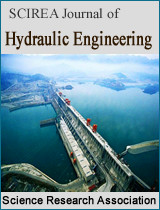Lessons Learned From Low-Crested Breakwaters Installation in North Coast of Java
DOI: 10.54647/hydraulic57026 71 Downloads 7737 Views
Author(s)
Abstract
Beyond the boundary and design criteria of Low Crested Breakwater (LCB), the success of LCB applications largely depends on the layout of the breakwater installation. The configuration of LCB includes vertical and horizontal positioning. Vertical layout related to the peak elevation position of the structure to the sea level, both to Mean Sea Level (MSL) and High Water level (HWL). Horizontal layout connected with LCB installation related to the optimal distance from the shoreline, the length of the structure, and the width of the gap between LCBs. These three parameters determine sediment volume accumulated behind LCB. This paper presents a summary of field experiences that is expected to be useful for the development of LCB as one of the methods of coastal protection. The objective of developing LCB structure is to make LCB concept as preferred coastal structure that is applicable to all types of materials commonly used for coastal protection.
Keywords
Low-Crested Breakwaters, geotextile tube, beach erosion, coastal protection, North Coast of Java.
Cite this paper
SULAIMAN, DM, F. NURHABNI, H.BACHTIAR,
Lessons Learned From Low-Crested Breakwaters Installation in North Coast of Java
, SCIREA Journal of Hydraulic Engineering .
Volume 4, Issue 3, June 2021 | PP. 40-50.
10.54647/hydraulic57026
References
| [ 1 ] | Alvarez, E., R. Rubio, and H. Ricalde (2006). Shoreline Restored with Geotextile Tubes as Submerged Breakwaters, Geosynthetics Magazine, Volume 24, Nimber 3, pp 1-8. |
| [ 2 ] | Ahmad B., M. Ismanto, S. Miftakhudin, and D.M. Sulaiman (2015). Coastal Erosion and Tidal flood Countermeasuring at Pekalongan Beach, in Proc. Annual Meet of 32 nd HATHI, Malang, Indonesia. |
| [ 3 ] | Google Earth (2017). http://www.googleearth.com/Java, (down load June 15 , 2017). |
| [ 4 ] | Hanson H. and N.C. Kraus (1990). Shoreline Response to a Single Transmissive Detached Breakwater, in Proc. 22nd Coastal Engineering Conf. ASCE. The Hague. |
| [ 5 ] | Ministry of Marine Affairs and Fisheries (2016). Monitoring of Coastal Belt along the North coast of Java, (Jakarta, Indonesia. |
| [ 6 ] | Research Center for Water Resources (2017). Draft Guidelines for Planning and Design of Low-Crested Breakwaters, Concensus Meeting, Bandung, Indonesia. |
| [ 7 ] | Sulaiman, DM. (2012). Beach Rehabilitation Using Geotextile Tubes LCBs at Tanjung Kait Beach Tangerang, J.Keairan, Vol.2. No.2, Dessember, 2012. |
| [ 8 ] | Sulaiman, DM. (2014). “Piling-up and Current pattern behind segmented low-crested breakwaters”, Doctoral Dissertasion, Graduate Program Prahyangan Catholic University, Bandung, Indonesia. |
| [ 9 ] | Sulaiman, DM., H. Bachtiar, and A.Taufiq (2015). Beach profile changes due to low-crested breakwaters at Sigandu Beach North Coast of Central Java, in Proceedia Engineering, 8th International Conference on Asian and Pacific Coasts, Elsevier, Volume 116, pages 510-519. |
| [ 10 ] | Sulaiman, DM., S.S. Effendi, R. M. Azhar, and Suprapto (2016). Coastal restoration using segmented LCBs: Case study Sigandu beach, Batang, Central Java Province, Proc. of 33rd Indonesian Hydraulics Engineering Conference, Semarang, Indonesia. |

